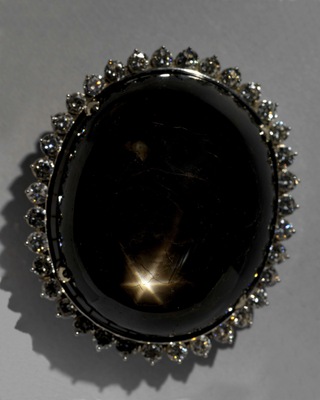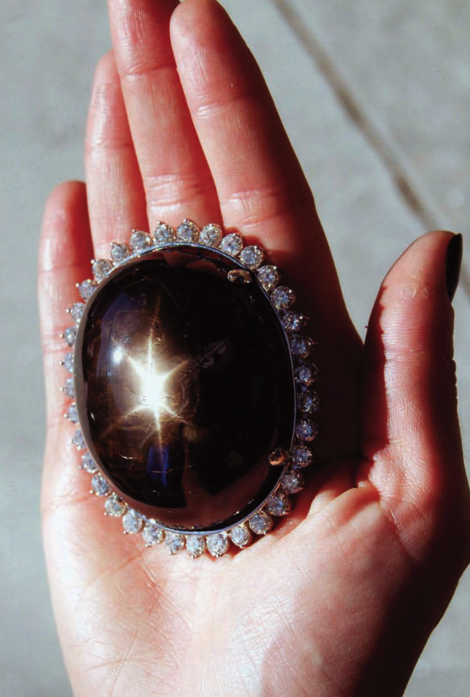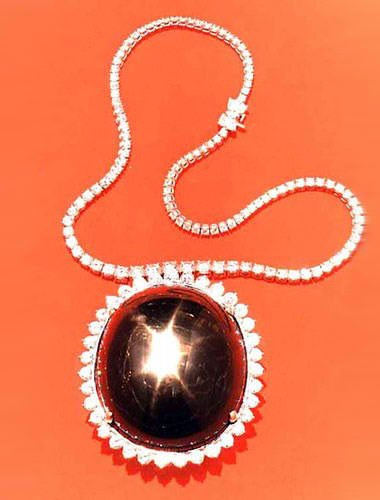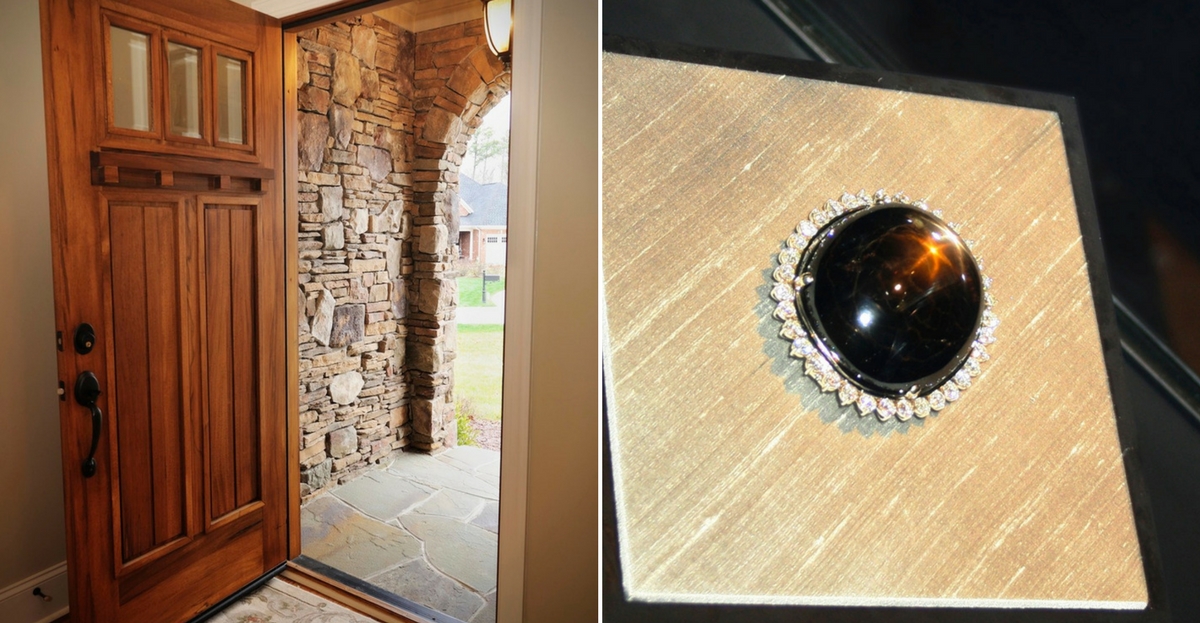Can you imagine holding $80 million in your hand and not knowing it? That's what happened to Harry Spencer when he used one of the world's largest sapphires as a door stop for 9 years.
In the mid-1930s 12-year-old Roy Spencer found a large black crystal in a field in Queensland, Australia. Anxious to show his father what he found he ran home. Harry Spencer was a miner and thought that his son had just unearthed an ordinary crystal, even if it was a little larger than normal.
Being a good father he appropriately oooohed and aaaahhhhed and put his son's treasure to work as a door stop, where it stayed for the next 9 years.

Nearly a decade, later Harry learned that sapphires can come in a lot more than the color blue, they can actually show up in almost every color (except red) - including black. He took a closer look at his doorstop and discovered the gem within.
He got to work finding a buyer and eventually sold the raw gem to a jeweler from Los Angeles. Harry Kazanjian bought the palm-sized sapphire for $18,000 in 1947, which is about $185,000 today.
Kazanjian was an expert in sapphires, and was convinced that the gem he had just purchased was a unique "star sapphire" which would greatly increase its worth if cut correctly.
A star sapphire has a unique fold that shimmers differently than other gems. It will create an optical effect called an "asterism" which shines like a 6-pointed star.

After 2 months of research and careful planning, Kazanikan cut the sapphire almost in half, revealing it to be the star sapphire he always believed it was. Once cut the sapphire's worth ballooned to over $1 million in 1949.
The sapphire has since been sold many times over, and is currently on a display rotation for some of the world's most famous museums. Known as the Black Star of Queensland the sapphire is set in a necklace of diamonds and is worth an estimated $80,000,000.

That's one expensive door stop.

